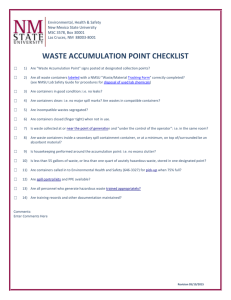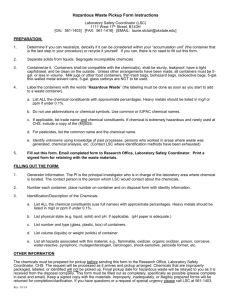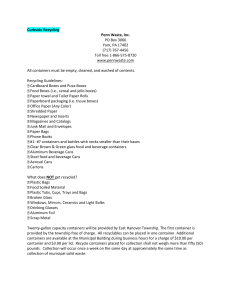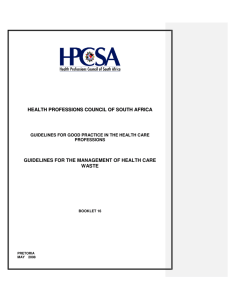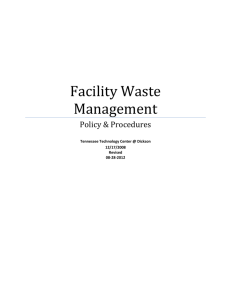Disposal of Empty Chemical Containers
advertisement
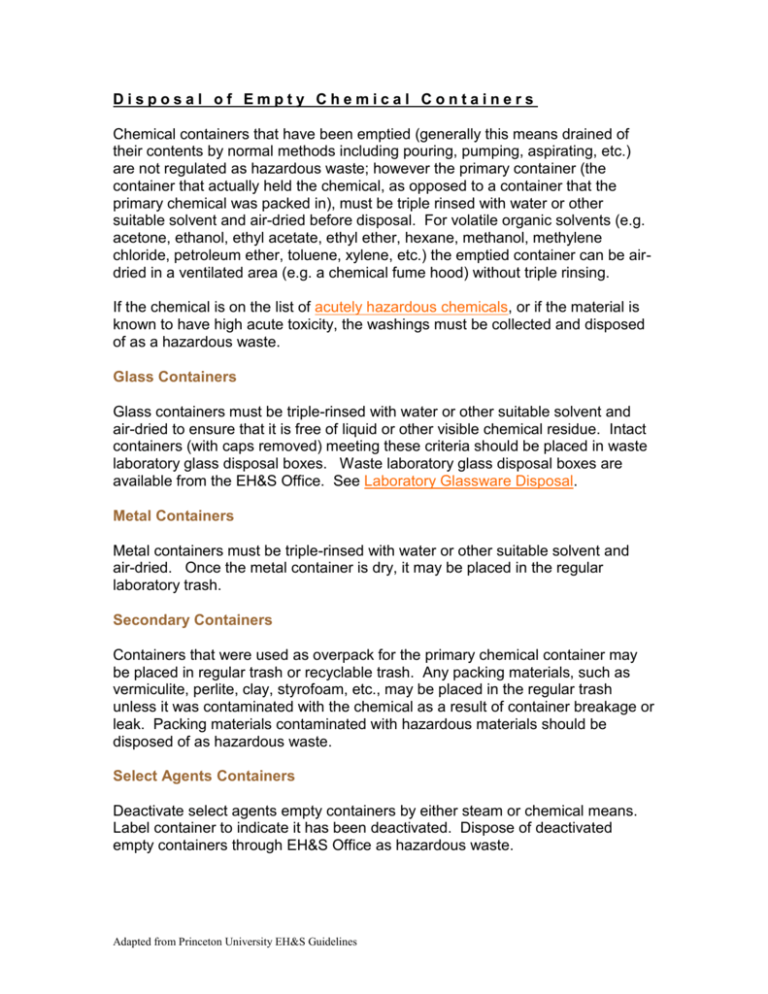
Disposal of Empty Chemical Containers Chemical containers that have been emptied (generally this means drained of their contents by normal methods including pouring, pumping, aspirating, etc.) are not regulated as hazardous waste; however the primary container (the container that actually held the chemical, as opposed to a container that the primary chemical was packed in), must be triple rinsed with water or other suitable solvent and air-dried before disposal. For volatile organic solvents (e.g. acetone, ethanol, ethyl acetate, ethyl ether, hexane, methanol, methylene chloride, petroleum ether, toluene, xylene, etc.) the emptied container can be airdried in a ventilated area (e.g. a chemical fume hood) without triple rinsing. If the chemical is on the list of acutely hazardous chemicals, or if the material is known to have high acute toxicity, the washings must be collected and disposed of as a hazardous waste. Glass Containers Glass containers must be triple-rinsed with water or other suitable solvent and air-dried to ensure that it is free of liquid or other visible chemical residue. Intact containers (with caps removed) meeting these criteria should be placed in waste laboratory glass disposal boxes. Waste laboratory glass disposal boxes are available from the EH&S Office. See Laboratory Glassware Disposal. Metal Containers Metal containers must be triple-rinsed with water or other suitable solvent and air-dried. Once the metal container is dry, it may be placed in the regular laboratory trash. Secondary Containers Containers that were used as overpack for the primary chemical container may be placed in regular trash or recyclable trash. Any packing materials, such as vermiculite, perlite, clay, styrofoam, etc., may be placed in the regular trash unless it was contaminated with the chemical as a result of container breakage or leak. Packing materials contaminated with hazardous materials should be disposed of as hazardous waste. Select Agents Containers Deactivate select agents empty containers by either steam or chemical means. Label container to indicate it has been deactivated. Dispose of deactivated empty containers through EH&S Office as hazardous waste. Adapted from Princeton University EH&S Guidelines




